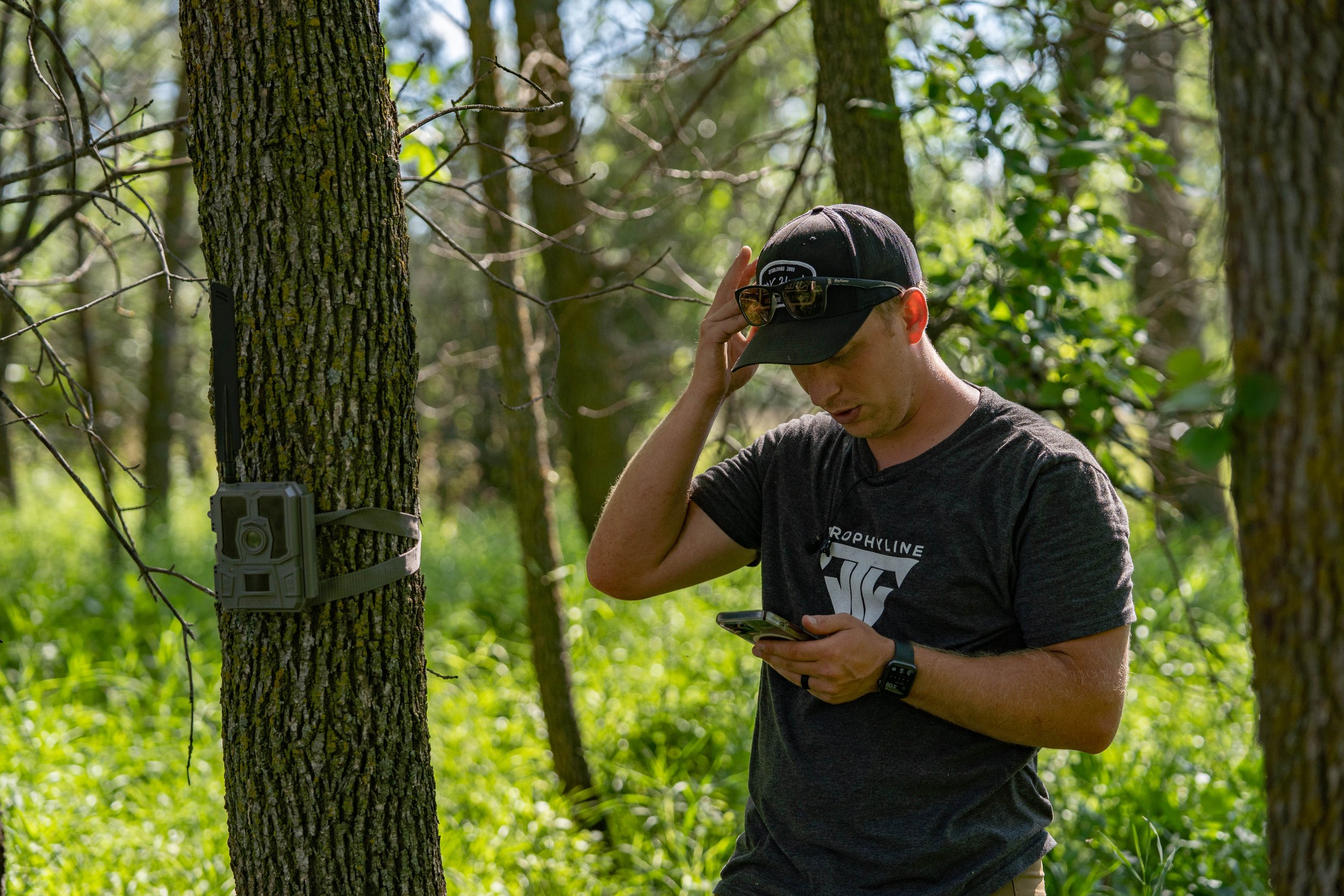By Alex Comstock
Across much of the country, a well timed cold front is blowing through here at the end of October. Cold temps, late October, and more mature buck movement signifies one thing - the rut is on the horizon. The "pre-rut" or the time of the year when does aren't necessarily ready to breed yet, but bucks are starting to ramp up is officially here. Subsequently, there will be more antlers rattled together and grunt tubes blown on in the next month than the rest of the year.
I feel as though there are a few things to be thinking about when calling right now, compared to the peak of the rut say in mid November. In the next week or two, here are four things you should be thinking about in regards to calling.
1. Analyze Buck Behavior First
When I'm determining if I should attempt to call to a buck, I want to analyze everything I can about his behavior first. For instance, if I watch a buck tear up a scrape, proceed to make a big rub, and just look pissed off, he's a good candidate to call to. I might give him a subtle grunt first, or even jump right into a snort wheeze.
On the other hand, even if it is the last week of October, if a buck is walking nonchalantly through an area, and doesn't seem very aggressive, he might not be as susceptible to calling at that very moment. If you can identify this first, and then you give him a subtle grunt and he doesn't pay any attention to it, you won't be as tempted to keep calling. There's nothing worse than continually grunting at a buck that isn't displaying any rutting behavior, and educating him.
2. Gauge A Buck's Interest
This is pretty similar to analyzing a buck's behavior, but it's understanding how a buck responds to a call. Inevitably, you will be wrong with your assessment of a buck's behavior, and it can be important to read that. If you grunt at a buck while he is walking away and he immediately stops and looks your way, you know he is at least interested. In this case, I might let him look around a bit, and as soon as he turns his attention away from the area, I'll throw out another grunt to get him curious again. If I grunt at a buck, and he starts getting aggressive, whether that be thrashing a tree or scrape, I might be more inclined to snort wheeze to challenge him.
What you also want to realize is when a buck isn't interested in your call. Even if a buck appears to be displaying aggressive behavior, he might not give a care in the world about your calling. He could be headed for a certain destination, or have something completely different on his mind. In this case, just because you witnessed his previous behavior, I wouldn't continue to call. If a buck isn't interested, cut your losses.
3. Know What Type of Area You're Hunting
Understanding what kind of area you are hunting plays a large role not only in how much you should call, but what type of calls to use. Are you in an open area, where a buck can look and see what's going on from afar without investigating? Or is it fairly thick, where if you grunted at a buck, he may have to head your way to see what made the sound? These are all things that should be running through your head. During the pre-rut, if I'm hunting an open area, I may even bring a decoy to compliment my calling. This is a whole different can of worms that I'm not going to open now, but a decoy can be a great tool to use in a field, food plot, or somewhere where if you rattle or grunt at a buck that's a long ways away, he can see the decoy.
In an open area such as this, a buck doesn't have to come within bow range to investigate. A decoy on this hunt last November would have been handy.
4. Don't Overdue It
This time of the year, people get excited. I'm guilty as anyone. You hit the woods when it's cold, there's that "feeling" in the air, and you know the rut is right around the corner. What do a lot of hunters want to do? Pick up the rattling antlers and start wrecking havoc. Grabbing the grunt tube and going to town. Except, going to town on calling isn't always the best plan of action. Instead, realize that a well timed grunt or tinkle of the antlers might be all you need. A little goes a long way, at least that's how I think of it.
A common phrase I hear a lot of people use is "I threw the kitchen sink at him" which is basically describing that fact that you tried everything possible, and the buck still didn't come in to the calling. Not often do I hear that phrase with "and then he came right in" at the end. There's usually a reason a buck doesn't commit to a certain call, and in most cases, overdoing it will hurt you. Don't be afraid to be aggressive, but remember that timing is everything.
Conclusion
The next month is the most fun time of the year to be in the deer woods. You never know what could happen, and that notion alone is what excites many people. When it comes to rattling, grunting, doe bleating, etc. it can be a lot of fun to be doing that, and hoping for it to work. Just remember that calling isn't always a shoe in for success, but when used properly, it might help you seal the deal on a mature buck.
































